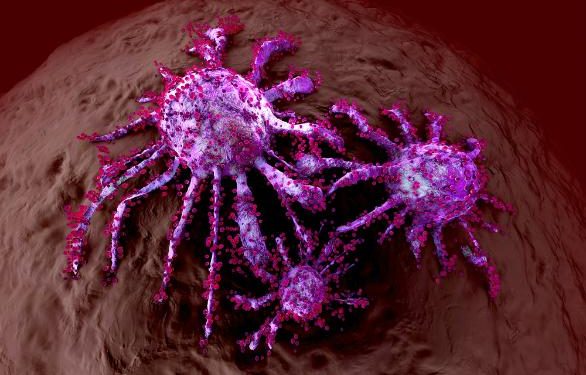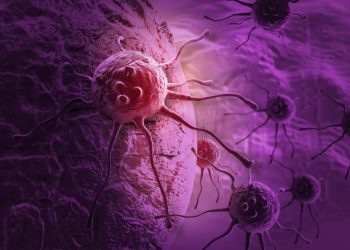Some people with cancer feel intimidated or unnerved by systems that reduce their condition to numbers and letters. Ask your providers about any system they use before your appointment.
Most people with CLL don’t have symptoms until they get a routine blood test for another health issue and find out they have too many lymphocytes (a type of white cell). They may then experience anemia, fatigue or an increased risk of infections.
1. Shortness of breath.
CLL happens in the blood and bone marrow — the spongy tissue inside bones where blood cells are made. When this cancer develops, it grows large numbers of abnormal white blood cells that don’t work as they should. They build up in your blood and bone marrow, crowding out healthy cells and blocking the production of new blood cells. Your doctor will need to check your symptoms and do some tests to diagnose chronic lymphocytic leukemia and determine how serious it is.
One of the most common chronic lymphocytic leukemia symptoms is shortness of breath, also known as dyspnea. You may feel like you can’t take in enough air when exercising or talking, or you might have a general feeling of breathlessness that affects your daily life. This symptom can be mild or severe, and it might occur at any time of the day or night. It might be accompanied by a tight feeling in the chest, a fast heart rate or clammy skin.
Your GP can do a simple blood test to check your levels of certain types of white blood cells. These include B lymphocytes (B-cells) that make antibodies to fight infection and T lymphocytes that control the immune system’s response to cancer cells and other foreign intruders.
If your doctor thinks you might have chronic lymphocytic leukemia, they may want to do a bone marrow biopsy. A sample of bone marrow is removed from your pelvic bones using a needle and sent to the lab for testing. If the biopsy is positive for leukemia, your GP will decide how to proceed with treatment. Currently, providers have treatments that can put the disease into remission for many people with chronic lymphocytic leukemia.
2. Fatigue.
Fatigue is a common symptom of chronic lymphocytic leukemia. It can be due to the cancer itself or the treatment. It can also be a side effect of certain medicines. Fatigue is a big problem because it interferes with everyday life. People with CLL often feel tired even after a good night’s sleep. This may be because they have too few healthy blood cells to carry oxygen around the body. This can lead to anemia. It can also be because they have too few white blood cells to fight infections. This can lead to neutropenia and low platelets, which cause easy bruising and bleeding.
It’s not known what causes chronic lymphocytic leukemia (CLL). It is a cancer of the blood and bone marrow — the spongy tissue inside bones where blood cells are made. It most often happens in older adults.
CLL occurs when healthy lymphocytes — a type of white blood cell — in the bone marrow develop a change, or mutation, and start growing out of control, crowding out healthy blood cells and keeping new ones from being made. This can cause symptoms such as swollen lymph nodes. It is usually diagnosed by having blood tests done as part of a regular physical examination.
Cancer-related fatigue is a normal part of cancer treatment, but it’s important to talk to your doctor if you’re experiencing it. They can help find ways to relieve it. Try to eat well and get enough sleep. Exercise can also help. Distract yourself with activities you enjoy. It may help to take a nap or use sleeping pills if needed. Be sure to talk with your doctor if you’re experiencing a new symptom or if old symptoms return.
3. Weight loss.
When leukemia cells build up, they crowd out healthy blood and bone marrow cells. This makes it hard for your body to make enough red and white blood cells, platelets and other blood components to do their jobs. The result is anemia from low levels of red blood cells, frequent infections because you don’t have enough infection-fighting white blood cells, and easy bleeding from low platelet counts.
You may also have swollen lymph nodes in your neck, armpits, stomach or groin. These are pea-sized glands that help the immune system fight infections and cancer. Swollen lymph nodes can feel tender and itch, but often don’t hurt. They can also make you lose weight, even if you’re eating enough.
Most people with chronic lymphocytic leukemia get it in their older years. It’s the most common type of leukemia in adults. It’s more likely to affect men than women and people assigned male at birth, but it can happen to anyone. Your risk increases with age, and it’s higher if you have a family history of blood and bone marrow disorders or were exposed to the chemical Agent Orange during the Vietnam War.
CLL grows slowly and doesn’t cause many symptoms, so it takes a long time for doctors to diagnose it. But it’s important to talk to your doctor if you have any of the symptoms, especially if they’re new or don’t go away. It could mean that you have chronic lymphocytic leukemia and need treatment. Treatment can keep the disease under control and prevent it from getting worse. Your doctor will test your blood to find out how many white and red blood cells you have. They might also test your spleen and liver for abnormalities.
4. Muscle weakness.
As the leukemia cells grow, they can crowd out the healthy blood cells that carry oxygen to all the tissues of the body. This may cause you to feel tired or weak. It can also interfere with the production of normal white blood cells, which fight infection. These problems can lead to recurrent infections.
Your doctor can diagnose chronic lymphocytic leukemia by doing a simple blood test. The test counts the number of lymphocytes (a type of white blood cell). If you have too many lymphocytes, it can indicate that your bone marrow is making them too quickly. The test may also help your doctor determine whether the lymphocytes are normal or cancerous.
Another symptom of chronic lymphocytic leukemia is swelling of the lymph nodes in the neck, under the arms, or in the groin. The enlarged lymph nodes are called swollen glands or swollen areas. They aren’t painful. These swollen areas aren’t a sure sign of chronic lymphocytic leukemia, but it is important to tell your doctor about them so that he or she can check for other causes, such as a thyroid problem.
Some people with chronic lymphocytic leukemia don’t have any symptoms. Others develop symptoms like fatigue, weight loss and swollen lymph nodes. If you have any of these symptoms, see your doctor right away. Finding the disease early may make it easier to treat. If you have a family history of leukemia, getting the condition checked as soon as possible is even more important. Your doctor will ask you questions about your symptoms and do a physical exam. He or she will also order blood tests to measure your blood cell levels.
5. Infections.
The cancer that causes chronic lymphocytic leukemia happens in your blood and bone marrow, the spongy tissue inside your bones where blood cells are made. Something changes — or mutations — in the DNA of your white blood cells so they don’t work like normal and build up in the bone marrow, crowding out healthy cells and keeping new blood cells from being made. These abnormal cells may also enter the bloodstream and interfere with your organs’ ability to function properly.
Over time, this can lead to problems such as a low number of blood platelets (thrombocytopenia), which can cause nosebleeds and heavy bleeding from the gums or heavy periods. A lack of red blood cells (anemia) and a low level of infection-fighting antibodies in your blood (neutropenia) can also occur. These problems can be a sign of CLL, but they also can happen for other reasons.
Your doctor will ask you about your symptoms and do tests to check for the disease. If you have these symptoms, make an appointment to see your GP (family doctor) as soon as possible. That way the problem can be found and treated before it gets worse.
People with chronic lymphocytic leukemia are at risk of developing infections, especially bacterial (gram-positive) infections. Infections can be serious and are a common cause of death in people with CLL, whether they’re being treated or on watch and wait.









